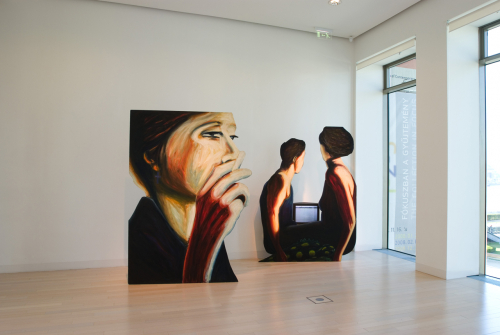The problems the L. A. Raeven twins residing in Amsterdam address in their video works are: who or what rules or set of norms determine our bodily structure, are we masters of our own bodies, how and to what extent may people, their decisions and desires be manipulated by the world of fashion and media? In each of their works, L. A. Raeven present a strong critique of the market-oriented, globalized world, the neglect of the individual and human dignity, and the statement of “you have to be successful, you can’t afford to be a loser”. In their criticism of the terror of the fashion world, they call attention to the arbitrariness of self-destruction by questioning the currents norms (ab-norms).
Nature’s Choice is about confining and manipulating human beings. It is a site-specific work created especially for the L. A. Raeven exhibition in 2002 at Ludwig Museum Budapest. The Budapest video presents the world of ballet dancers, and the search for the ideal ballerina’s body. L. A. Raeven filmed the work in Budapest casting Hungarian ballet-dancers. The title of the work is taken from the title of a ballet course book which describes the ideal body for ballet dancing. According to this, skinny girls between 10 and 13, still not mature with an upright posture and perfect flexibility would be the best ballet-students. L. A. Raeven, however, pose the question: what if somebody with a different body would like to be a ballet dancer? The answer of the contemporary world is self-torture, body-modification and frustration.
Nature’s Choice is about the sufferings, doubts, fears, and hard work of two ballet-dancers, Barbara and Eszter. It is also about the war they wage on each other, on their bodies and on the world’s expectations. The two video works are accompanied by a long questionnaire in which the girls give shocking confessions about their miserable everyday diet, the characteristics of their bodies, and the much-desired (?) existence as a ballet-dancer. L. A. Raeven explicitly show how unnatural and unhealthy modern society is, how rigid its norms are, and how unreasonably it discriminates. Their work communicates that we should call into question the world’s norms, and instead of succumbing to them, we should modify them according to ourselves and nature.



